What is Data Science ?
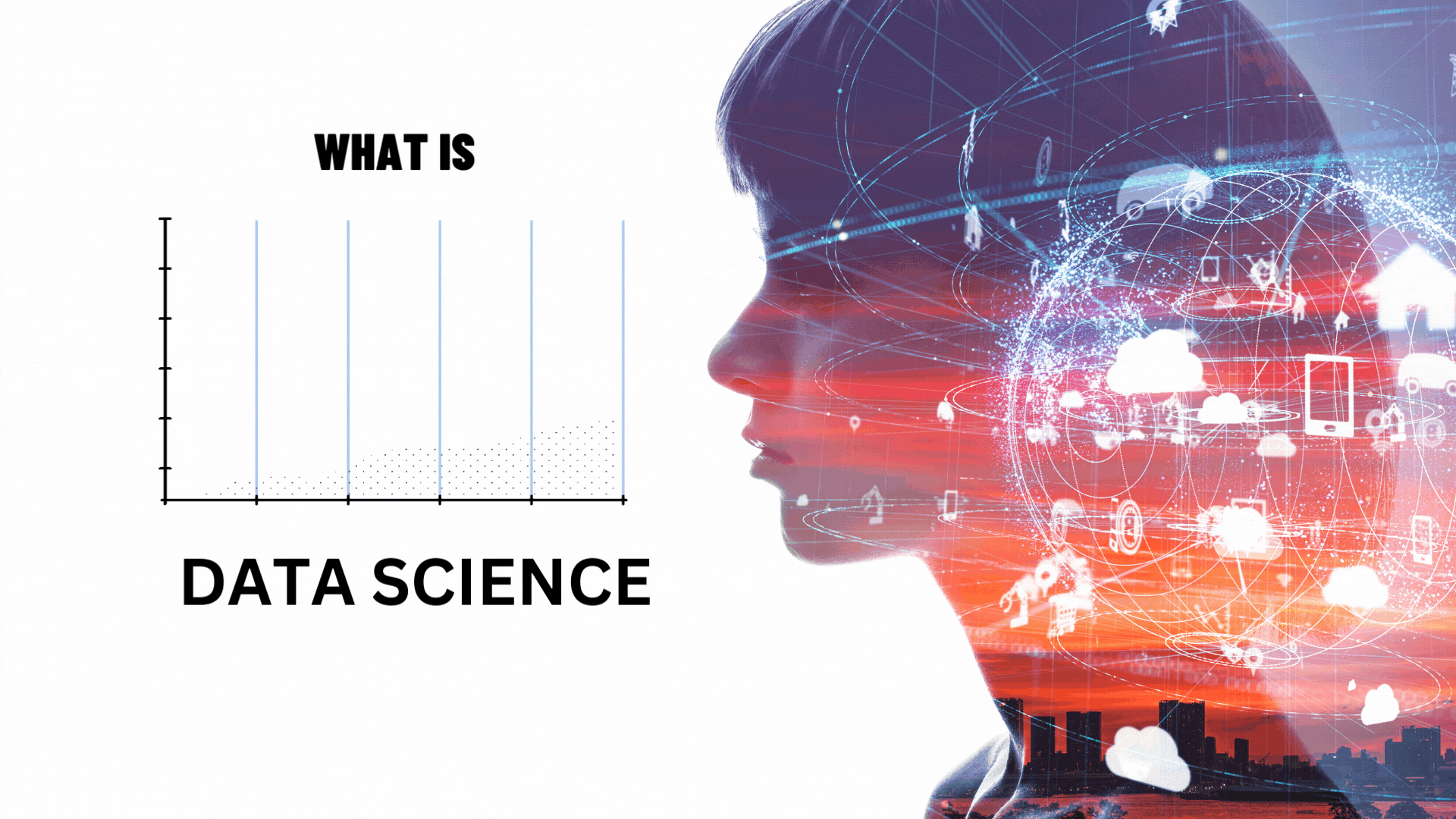
- What is Data Science?
- Data Science Prerequisites
- What is Data Science Lifecycle
- Data Science Tools
- What are the Data Science Techniques?
- Applications Of Data Science
- Data Science Vs Data Analytics
- Data Science And Cloud Computing
- Business Intelligence Vs Data Science
- How to Become a Data Scientist?
- Conclusions
- Frequently Asked Questions(FAQ)
Table of Content
 Logicmojo - Updated Jan 2, 2025
Logicmojo - Updated Jan 2, 2025
What is Data Science
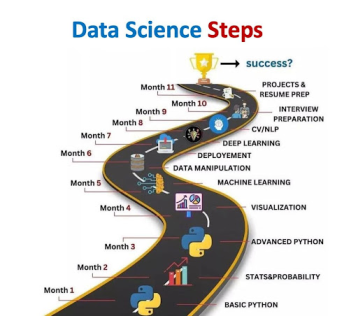
Data science is an intersection of disciplines that extracts knowledge from both organized and unstructured data using analytics techniques, subject-matter knowledge, and technology. Data analytics, forecasting, machine learning, predictive analytics, statistics, and text mining are typically included in this approach to analysis. These systems produce insights that analysts and business users may turn into real-world commercial value.
In the video below, we explain what data science is and how it is used in many projects at tech companies
As explained above, the demand for data scientists is increasing rapidly in almost every industry.
Recent years have seen a rise in the importance of data science, thanks to the expansion of big data and the accessibility of strong computing resources. As a result, there is a rising need for workers with data science knowledge and skills, and the discipline of data science has grown in-demand.

A brief overview to data science is provided in this article, together with information on data science lifecycle, tools, applications, career roadmap, and other related topics.
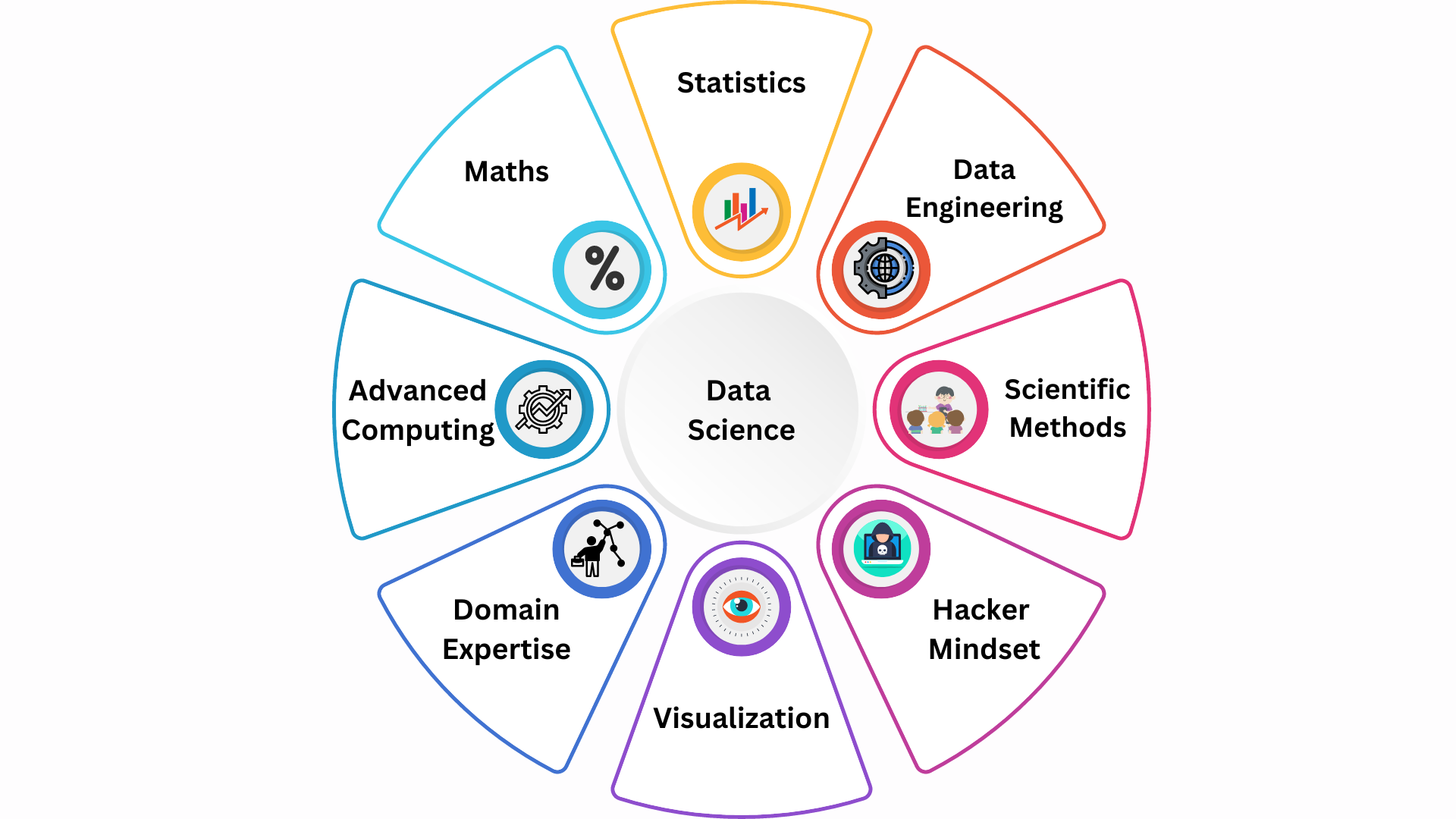
Data Science Prerequisites

Several conditions must be met to implement data science technologies in a business effectively. Before you start to learn what is data science let's understand some of its requirements.
- Machine Learning
Statistics
If you are serious about pursuing a career in data science, you must possess an understanding of both descriptive and inferential statistics. You can draw a variety of conclusions and comprehend the data at hand with the aid of statistical analysis.
Computer Programming
Professionals must be knowledgeable in programming languages like Python or R to perform the statistical calculations and calculations needed for Data Science operations. You may easily build machine learning models from scratch with the assistance of libraries and scripting experience. Some of the built-in Python programming libraries that can be used for Data Science with Python are Scikit-learn, Tensorflow, pandas, matplotlib, seaborn, scipy, numpy, etc.
Mathematical Modeling
Applying mathematical models based on the information you already have, you may swiftly compute and make predictions. Modeling is useful for figuring out how to train these models and which method will handle a certain problem the best.
Databases
Data science requires a thorough understanding of databases, such as SQL, in order to obtain and deal with data.
Analytical Thinking
To address business issues, a data scientist must use analytical thinking and be able to come up with a variety of innovative and effective solutions.
Strong Business Sense and Communication Skills
A data scientist must possess tactical business consulting skills and the ability to communicate effectively.
Machine Learning, a critical component of data science, enables accurate forecasting and estimation. If you want to be successful in the field of data science, you must have a solid understanding of machine learning.
Lifecycle of Data Science
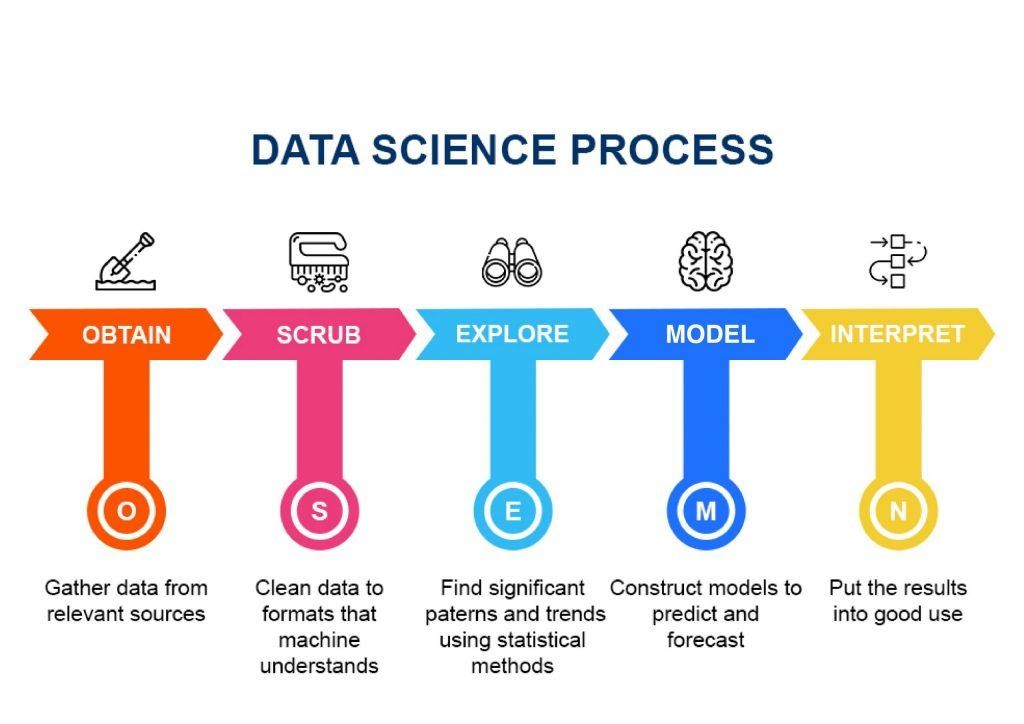
To understand what is data science it's significant to understand its lifecycle. The data Science Lifecycle encompasses various steps, tools, and processes to produce insights from information to acquire a commercial enterprise. Executing a data science project undergoes various phases which include data gathering, cleaning, modeling, and model evaluation as outlined below:
Phase 1-Discovery: A data science project initiates by understanding the business need, it is important to understand the various specifications, requirements, priorities and required budget. You must possess the ability to ask the right questions and frame the business problem.
Phase 2-Data Collection: The data science lifecycle begins with the data collection. The raw structured and unstructured data is gathered from different sources through manual entry, web scraping, or real-time streaming.
Phase 3-Data preparation: Data preparation is a significant phase in the data science project. This phase helps in cleaning and shaping the data for further analysis. The data preparation process follows ETLT (extract, transform, load) jobs to get data into the sandbox.
Phase 4-Model planning: Model planning determines the methods and techniques to draw the relationships between variables, these relationships will set the base for the algorithms. Data scientists implement Exploratory Data Analytics to examine data patterns, distribution, and biases using various statistical formulas and visualization tools.
Phase 5-Model building:The model building phase contributes to developing datasets for training and testing purposes. This phase analyzes various learning techniques like classification, association, and clustering to build the model.
Phase 6-Operationalize: This phase delivers the final reports, briefings, code, and technical documents. In addition, sometimes a pilot project is also implemented in a real-time production environment. This will provide a clear picture of the performance and other related constraints on a small scale before full deployment.
Phase 7-Communicate results: Now it is important to evaluate if you have been able to achieve the goal that you had planned in the first phase. So, in the last phase, you identify all the key findings, communicate to the stakeholders, and determine if the results of the project are a success or a failure based on the criteria developed in Phase 1.
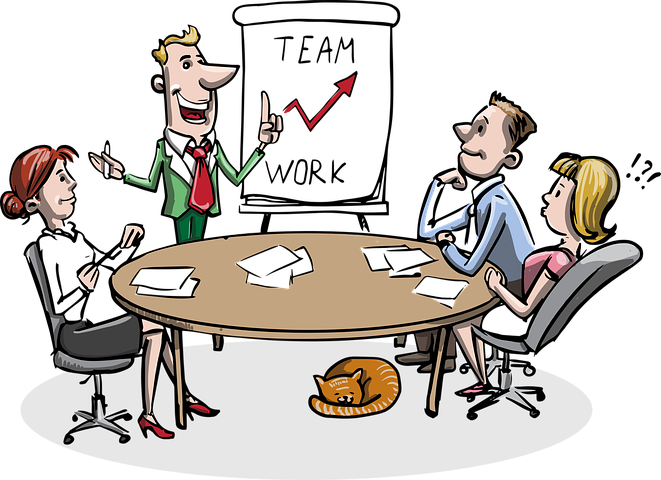
Data Science Tools
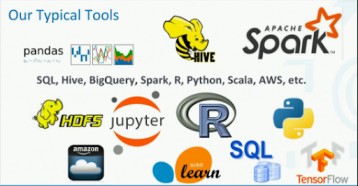
To employ them throughout their careers, data science experts often need a toolbox of data science software and coding languages. Some of the more often utilized choices in use now are as follows:
| Tools | Usage |
|---|---|
| Python | Data Cleaning Processing Data visualization Machine Learning |
| R | Statistical Analysis and Modeling Data Manipulation Data visualization |
| NLTK | Text Pre-Processing Language Understanding Feature Extraction |
| Matplotlib | Data Exploration Model Evaluation Communicating results |
| TensorFlow | Model Development Model Customization Learning Transfer |
| Scikit-learn | Machine Learning Evaluation |
| D3.js | Dashboard Development Interactive data Exploration |
| KNIME | Data Mining Data Pre-processing Workflow Automation |
| WEKA | Clustering Regression Analysis Association Rule Mining |
| SAS | High Reliability and Security Procedural Versality Data Handling |
| Tableau | Data Visualization Data Integration Real-time Collaboration |
| Apache Spark | Big Data Analytics Graph Processing Real-time Data Processing |
| Apache Hadoop | Data Warehousing Batch Processing Log Processing |
What are the Data Science Techniques?
The prime techniques used by data scientists to perform data science processes are:
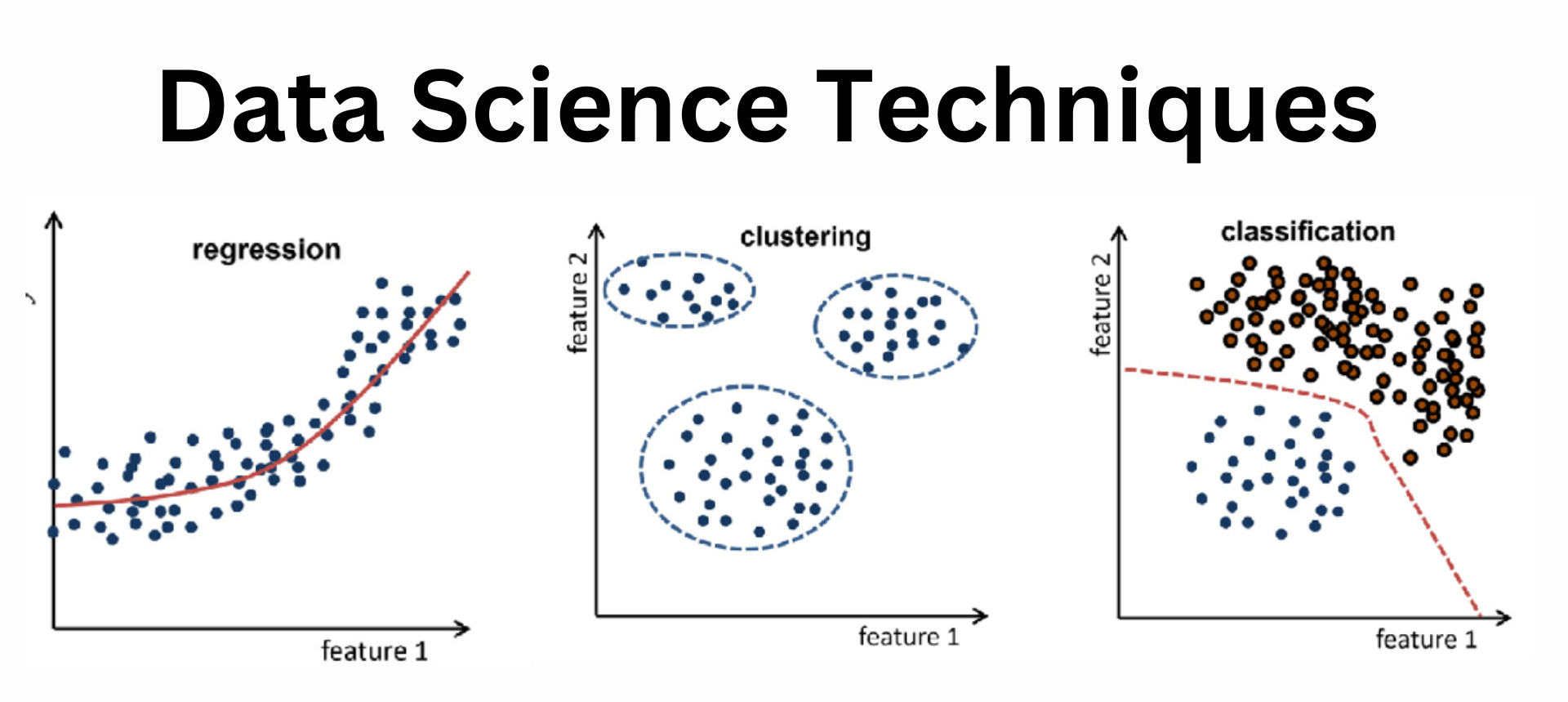
Regression
Discovering a connection that connects two independent data points is done through regression. The relationship is typically depicted as a graph or a series of curves and is fashioned after a mathematical formula. Regression is used to forecast the value of the other data point when the value of the first data point is known.
Clustering
Unsupervised learning employs the data science approach of clustering, often known as cluster analysis. In a cluster analysis, objects from a data collection that are closely related are grouped together, and then each group is given a set of properties. Data patterns are revealed through clustering, which is frequently used with big, unstructured data sets.
Classification
Data is categorized when it is put into distinct groups or categories. To recognize and organize data, computers are trained. Building decision algorithms in a computer that swiftly analyses and organizes the data makes use of known data sets. Consider categorizing comments on social media as favorable, negative, or neutral.
Applications of Data Science
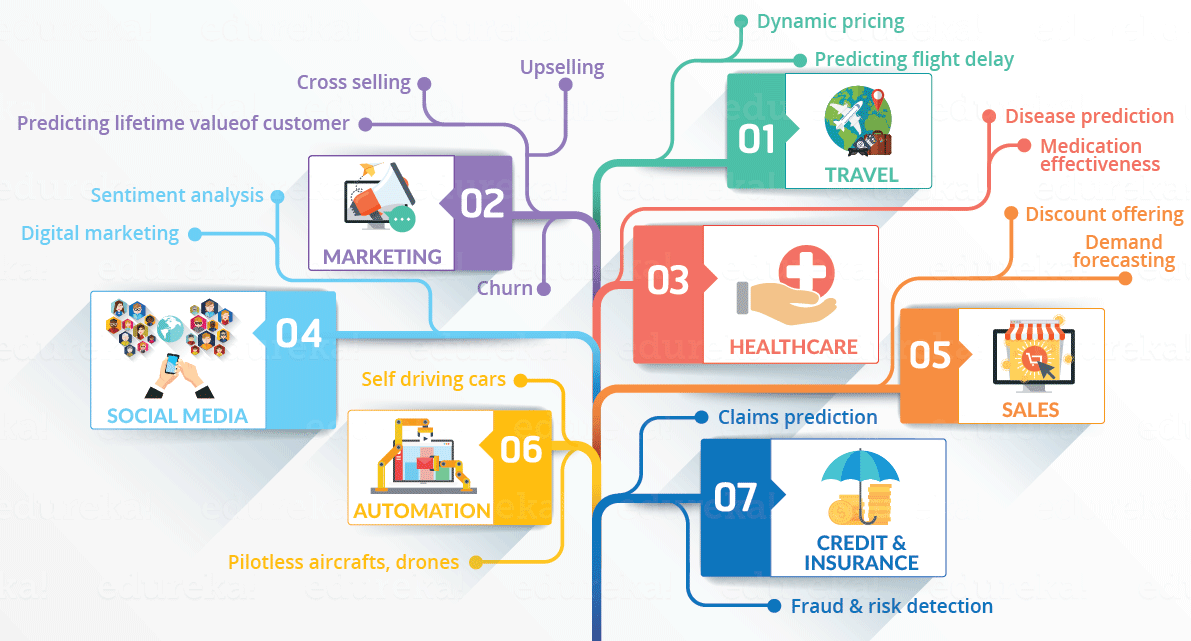
Data science has a wide range of applications in almost every industry, significantly impacting business operations and services. Some of the core applications of data science are outlined below:
Healthcare
-predictive Analytics
-Medical Imaging
-Personalized Medicine
Finance
-Risk Management
-Fraud Detection
-Algorithmic Trading
Marketing
-Customer Segmentation
-Sentiment Analysis
-Predictive Analytics
Retail
-Inventory Management
-Recommendation System
-Price Optimization
Transportation
-Route Optimization
-Predictive Maintenance
-Predictive Maintenance
-Autonomous Vehicles
Education
-Personalized Learning
-Academic Analytics
-Curriculum Development
Manufacturing
-Quality Control
-Supply Chain Optimization
-Process Automation
Data science and cloud computing
Cloud computing scales data science value by providing additional processing power, storage, and tools required for data science projects, this provides benefits to even small organizations. Data science’s foundation is the manipulation and analysis of extremely large data sets; the cloud provides access to storage infrastructures capable of handling large amounts of data with ease. Data science also involves running machine learning algorithms that demand massive processing power; the cloud makes available the high-performance computing necessary for the task. To purchase equivalent on-site hardware would be far too expensive for many enterprises and research teams, but the cloud makes access affordable with per-use or subscription-based pricing. Cloud infrastructures can be accessed from anywhere in the world, making it possible for multiple groups of data scientists to share access to the data sets they’re working on within the cloud—even if they’re located in different countries. Open-source technologies are widely used in data science toolsets. When they’re hosted in the cloud, teams don’t need to install, configure, maintain, or update them locally. Several cloud providers also offer pre-packaged tool kits that enable data scientists to build models without coding, further democratizing access to innovations and insights.
Data Science Vs Data Analytics

Data Science analyzes large datasets and solves complex problems with different tools, techniques, and algorithms. It combines the disciplines of statistics, computer science, and domain knowledge for collecting data, modeling, and gathering insights from data. Data Analytics focuses on the area of statistical analysis, arithmetic, and data mining whereas data science emphasizes data analysis. Data analysts are usually responsible for driving trends, patterns, and insight from data. They work with structured data and data visualization software to compose reports and dashboards. Whereas data scientists not only analyze data but also build predictive models and algorithms, they have a broader skillset than data analysts. A data scientist works with advanced machine learning and statistical modeling techniques, they leverage various programming languages to drive data visualization. In simple terms, a data scientist develops novel techniques and tools to analyze data for use by analysts, whereas a data analyst makes sense of already existing data.
Difference Between Business Intelligence and Data Science
Business intelligence is a combination of the strategies and technologies used for the analysis of business data/information. Like data science, it can provide historical, current, and predictive views of business operations. However, there are some key differences.
| Business Intelligence | Data Science |
|---|---|
| Uses structured data | Uses both structured and unstructured data |
| Analytical in nature - provides a historical report of the data | Scientific in nature - perform an in-depth statistical analysis on the data |
| Use of basic statistics with emphasis on visualization (dashboards, reports) | Leverages more sophisticated statistical and predictive analysis and machine learning (ML) |
| Compares historical data to current data to identify trends | Combines historical and current data to predict future performance and outcomes |
How to become a data scientist?
Now you know what is data science, its lifecycle, and its tools, let's go through the roadmap to becoming a data scientist:
1. Earn a bachelor’s degree in IT, Computer Science, Engineering, Math, or other related areas.
2. Earn a master’s degree in Data Science, Machine Learning, or other related areas.
3. Develop core skills in Statistics, Mathematics, and Machine Learning.
4. Gain practical experience through projects and internships.
5. Learn about cloud platforms and big data tools.
6. Develop problem-solving and communication skills.
7. Gain certifications in data science, machine learning, or specific technologies or take online courses.
8. Build a resume and apply for entry-level jobs like data analyst, or junior data scientist to gain experience.
9. Data science is an evolving technology so learn continuously and stay updated with the latest technologies, tools, and best practices.
Conclusions
Data science is the secret sauce for any firm that wants to grow by becoming more data-driven. Data science initiatives can increase the return on investment by developing data products as well as providing direction through data insight. Hiring individuals with this potent combination of diverse skills, however, is more difficult than it sounds. The demand for data scientists simply outweighs the supply because their salaries are quite high.
A business can grow significantly using data science tools and methods. Every company is going through a digital transformation, and there is a growing need for people with the necessary knowledge and abilities. Companies are willing to pay top dollar for the right talent. If data science is something you're interested in pursuing professionally, consider acquiring the necessary skills to excel in this growing field, as it offers many opportunities for career advancement and innovation.
Good Luck & Happy Learning!!





